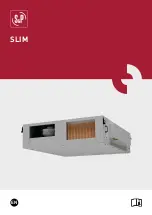
OPERATION
4-2
Manual 0-2815
4.04 Torch Parts Selection
Depending on the type of operation to be done determines
the torch parts to be used.
Type of operation:
Standoff cutting or gouging
Torch parts:
Shield Cup, Cutting Tip, Electrode and Gas Dis-
tributor
NOTE
Refer to Appendix Pages for additional informa-
tion as related to the Power Supply used.
To change the torch parts for a different operation use the
following procedure:
NOTE
The tip and gas distributor are held in place by the
shield cup. Position the torch with the shield cup
facing upward to prevent these parts from falling
out when the cup is removed.
1. Unscrew and remove the shield cup from the torch
head.
Torch Head Assembly
Shield Cup
Gas
Distributor
Tip
Electrode
A-02832
Figure 4-1 Torch Parts
2. Tilt the torch head to remove the tip and gas distribu-
tor.
3. Remove the SureLok Electrode by pulling it straight
out of the Torch Head.
4. Install the desired SureLok Eelectrode by pushing it
straight into the torch head until it clicks.
5. Install the desired gas distributor and tip for the op-
eration into the torch head.
6. Hand tighten the shield cup until it is seated on the
torch head. If resistance is felt when installing the
cup, check the threads before proceeding.
4.05 Cut Quality
NOTES
Cut quality depends heavily on set-up and param-
eters such as torch standoff, alignment with the
workpiece, cutting speed, gas pressures, and op-
erator ability.
Refer to Appendix Pages for additional informa-
tion as related to the Power Supply used.
Cut quality requirements differ depending on applica-
tion. For instance, nitride build-up and bevel angle may
be major factors when the surface will be welded after
cutting. Dross-free cutting is important when finish cut
quality is desired to avoid a secondary cleaning opera-
tion. The following cut quality characteristics are illus-
trated in Figure 4-2:
Kerf Width
Cut Surface
Bevel Angle
Top Edge
Rounding
Cut Surface
Drag Lines
Dross
Build-Up
Top
Spatter
A-00007
Figure 4-2 Cut Quality Characteristics
A. Cut Surface
The desired or specified condition (smooth or rough)
of the face of the cut.
B. Nitride Build-Up
Nitride deposits can be left on the surface of the cut
when nitrogen is present in the plasma gas stream.
These buildups may create difficulties if the material
is to be welded after the cutting process.
C. Bevel Angle
The angle between the surface of the cut edge and a
plane perpendicular to the surface of the plate. A per-
fectly perpendicular cut would result in a 0° bevel
angle.
D. Top-Edge Rounding
Rounding on the top edge of a cut due to wearing
from the initial contact of the plasma arc on the work-
piece.
Summary of Contents for SureLok PCM-102
Page 2: ......
Page 6: ......
Page 18: ...INTRODUCTION DESCRIPTION 2 4 Manual 0 2815 ...
Page 58: ......
















































